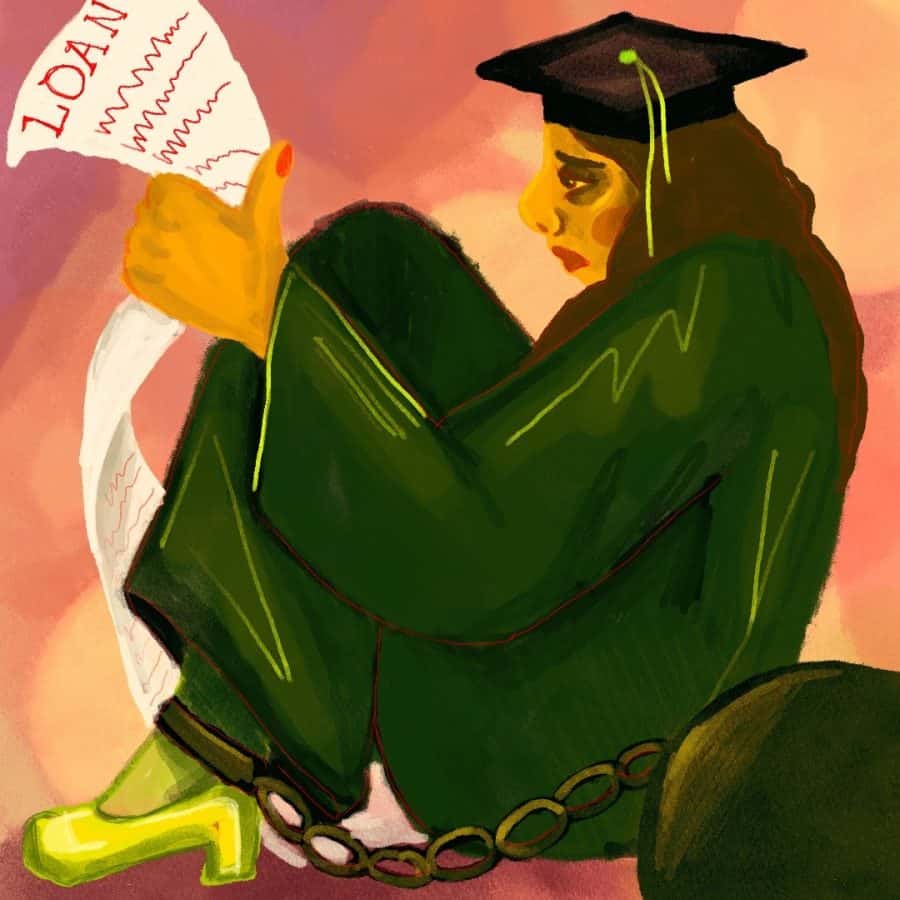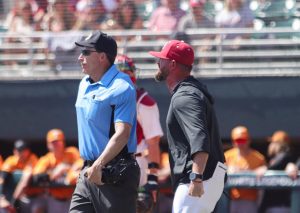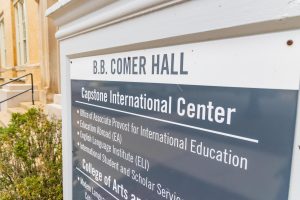Opinion | Alabama needs student debt relief
March 22, 2023
In August 2022, joy and relief soared through the stomachs of people with student debt.
The Biden administration announced their plans to forgive up to $20,000 for Pell Grant recipients with loans held by the Department of Education and up to $10,000 for non-Pell Grant recipients, both of which must make below $125,000 a year to become eligible.
On Nov. 11, 2022, the relief program announced on its website that it would not accept any other applications, given the 26 million applicants who had already applied and the program’s fate at stake. Currently, the Biden Administration has seen at least six court challenges, two of which were successful in their efforts.
According to their website, Federal Student Aid is “seeking to overturn those orders.”
Forty million borrowers would qualify for the relief program. A student debt relief program of $10,000 would relieve the debts of 15 million borrowers entirely, according to the White House fact sheet.
Student loan debt is often debated in the news as the rising price of higher education begins to box out those without the means to pay tuition. As of February, Americans owe a collective $1.71 trillion in student loan debt, according to the Education Data Initiative. This total has increased by 102% over the last 10 years.
In the United States, 48% of Pell Grants are awarded to students whose families earn less than $20,000 dollars annually and 39% are awarded to families with Expected Family Contributions between $20,001 to $50,000. Only 7% of Pell Grant recipients come from families that earn $60,000 or more annually.
The Alabama Higher Education Commission reports that 51% of Alabama college graduates leave with student loans. Over 370,000 borrowers were deemed eligible for relief. Just under 126,000 residents receive Pell Grants, at an average of $4,957 in amounts awarded.
One part of the debt relief plan also hopes to explore a future system to make borrowing student loans less intimidating for those who must borrow, no matter how large the amount. The drafted rule would not require borrowers to pay more than 5% of their monthly discretionary income toward their student loans.
In 2021, the average graduate from The University of Alabama received a yearly salary of $54,290, coming out to around $4,500 per month, according to the UA Career Center.
The average student loan monthly payment is between $300 and $600, with a monthly interest of 4.99% for direct subsidized or unsubsidized loans. This is an interest rate set and regulated by Congress. From private lenders, interest rates can vary widely, most often higher than the fixed federal rate.
The plan will also raise the amount of income that is considered non-discretionary, such as the money needed for rent, loans, bills and other general necessities.
This guarantees that no borrower earning less than 225% of the federal poverty level will have to make a monthly payment. This number equals around $15 an hour with the federal poverty level falling at $14,580 in discretionary income, as only $20,400 is considered nondiscretionary and therefore protected from these plans.
Previously, students were required to pay loans for up to 20 years and could stop once their loan reached $12,000 or less. With interest rates of 4.99% and occasional spikes from the Federal Reserve, you could expect to see your rates double within the previously required 20-year pay period.
If this plan passes, borrowers will only be asked to pay the loans for 10 years with the same requirement of a balance of $12,000 or less. Monthly interest will also become obsolete. If a borrower continues to pay their monthly payments, their balance will not grow, even if they aren’t required to pay at that time due to a low income.
This plan remains in limbo, but the Biden Administration continues to push forward with a second backup plan to address some of the most detrimental effects of student debt, such as negative amortization.
First announced last August, this plan was overshadowed by the debt relief plan to relieve $20,000. The Revised Pay As You Earn, or REPAYE program, will eradicate three of the four plans in place and focus on one plan that is more generous and focused on simplicity and transparency in fees and interest.
Borrowers were initially told they would receive forgiveness by the fall of 2020, but deadlines are consistently being extended and plans are being altered.
Students deserve to have answers and relief.



















![UPDATE | New details have emerged about U.S. Immigration and Customs Enforcement’s arrest of doctoral student Alireza Doroudi.
— Yesterday, a University spokesperson confirmed that a doctoral student was arrested by federal immigration authorities, without providing the student’s name, declining to share specific information due to federal privacy laws.
“International students studying at the University are valued members of the campus community, and International Student and Scholar Services is available to assist international students who have questions,” said Alex House, associate director of media relations for the University. “UA has and will continue to follow all immigration laws and cooperate with federal authorities.”
— An employee at the Pickens County Jail confirmed that Doroudi is being held there, adding that the facility typically sends ICE detainees to a detention facility in Louisiana.
— The Department of Homeland Security provided a statement about Doroudi’s arrest:
“ICE HSI [Homeland Security Investigations] made this arrest in accordance with the State Department’s revocation of Doroudi’s student visa. This individual posed significant national security concerns,” a DHS spokesperson said. The statement did not provide details about why it claimed Doroudi posed national security concerns.
— Students for Justice in Palestine at UA, formerly known as Bama Students for Palestine, said in a statement on social media Thursday that it was “outraged” to learn of his detainment and that he "was not involved, nor has he ever been involved in any organizing or protests related to our organization."
This is a developing story and will continue to be updated. Read the updates at the link in our bio.](https://scontent-iad3-1.cdninstagram.com/v/t51.75761-15/486944895_18492822301025566_6944596333023050206_n.jpg?stp=dst-jpg_e35_tt6&_nc_cat=107&ccb=1-7&_nc_sid=18de74&_nc_ohc=hnp26Pzwsm0Q7kNvgH09W0S&_nc_oc=AdmIBEMuR_aRgaBd00Hlot3E59Vj_4lQyCImLLgp8CLdbxpSmLU25dhU_MO_Zul-qcU&_nc_zt=23&_nc_ht=scontent-iad3-1.cdninstagram.com&edm=AM6HXa8EAAAA&_nc_gid=YBEq6-Vs4rWbY-dRMs1BXw&oh=00_AYHnYcN7EoIVRd382z8S3q637qPSQr0EC8NJdp-tCJWKbA&oe=67F30BB0)

